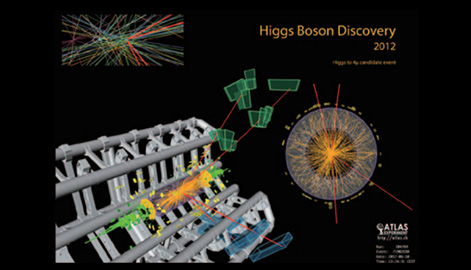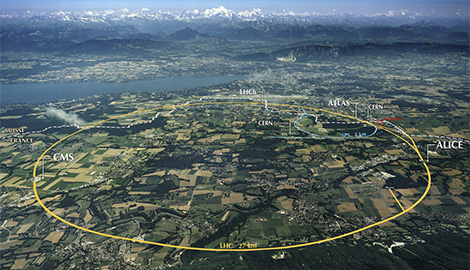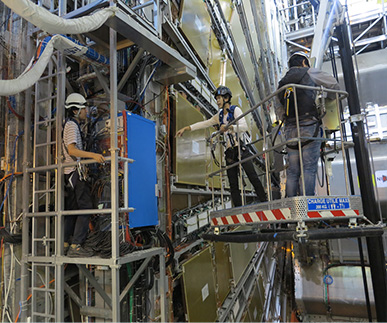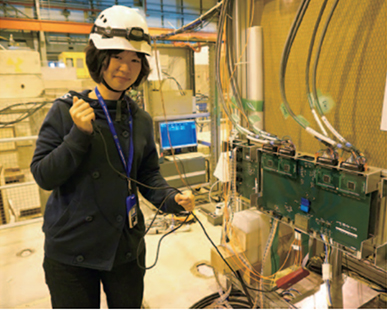The N Lab is actively taking part in one of the LHC experiments, namely the "ATLAS experiment". Making use of cutting-edge technologies, students and faculty members are collaboratively working on frontier researches, both day and night.
Research
ATLAS Experiment
The Large Hadron Collider (LHC) is a 27-kilometer circumference proton-proton collider with the world’s largest energy, hosted at the CERN European laboratory. In 2012, it discovered the Higgs particle during its 4 TeV×4 TeV operation. Further, the LHC will increase its energy (7 TeV×7 TeV) and its beam intensity, to reach an unprecedented energy frontier and search for elementary-particle phenomena at the scale of 10-19 m. The LHC aims to increase our understanding of the origin of mass through the measurements of the Higgs boson, and to detect particles arising from physics beyond the Standard Model such as supersymmetry and extra dimensions.

An image showing a candidate event of a Higgs decay (H→ZZ→μμ) detected by the LHC-ATLAS experiment. (Photo: CERN ATLAS group)
(Photo: CERN ATLAS group)


A photo showing the tests of the electronics system aimed for the muon trigger upgrade of the LHC-ATLAS experiment.
As detector R&D activities, we have been dedicated to the construction of the Muon Spectrometer, which is one of the subsystems of the colossal cylindrical detector with a 22 m diameter and a 43 m length. Additionally, we have spearheaded the development of the technologies for the high-performance software trigger.
As physics analyses activities, we have taken the lead in the international research fields of the searches for supersymmetric particles and extra dimensions, the measurement of the coupling constant of the Higgs boson decaying into muon pairs, and the precise measurement of the pair-production of top quarks.
Further, the LHC experiments plan to make large improvements to their accelerators and detectors in the years 2025--2027. At N Lab, we are pushing forward the developments of the muon trigger electronics and the new software of the ATLAS experiment. We are leading the activities such as the construction of the fast data transmission of 3 terabytes per second and electronics that operates at the high-radiation environment of the LHC.
By achieving impactful physics results continuously for the coming 10 to 20 years, we will make contributions to the development of elementary particle physics from the energy frontier.

